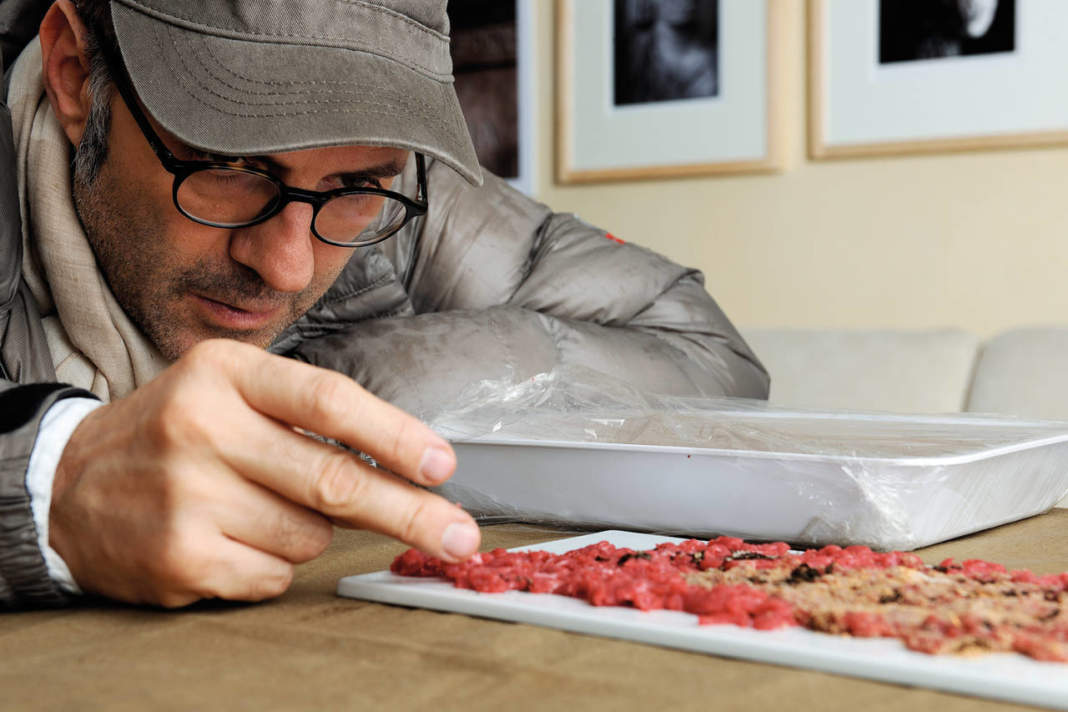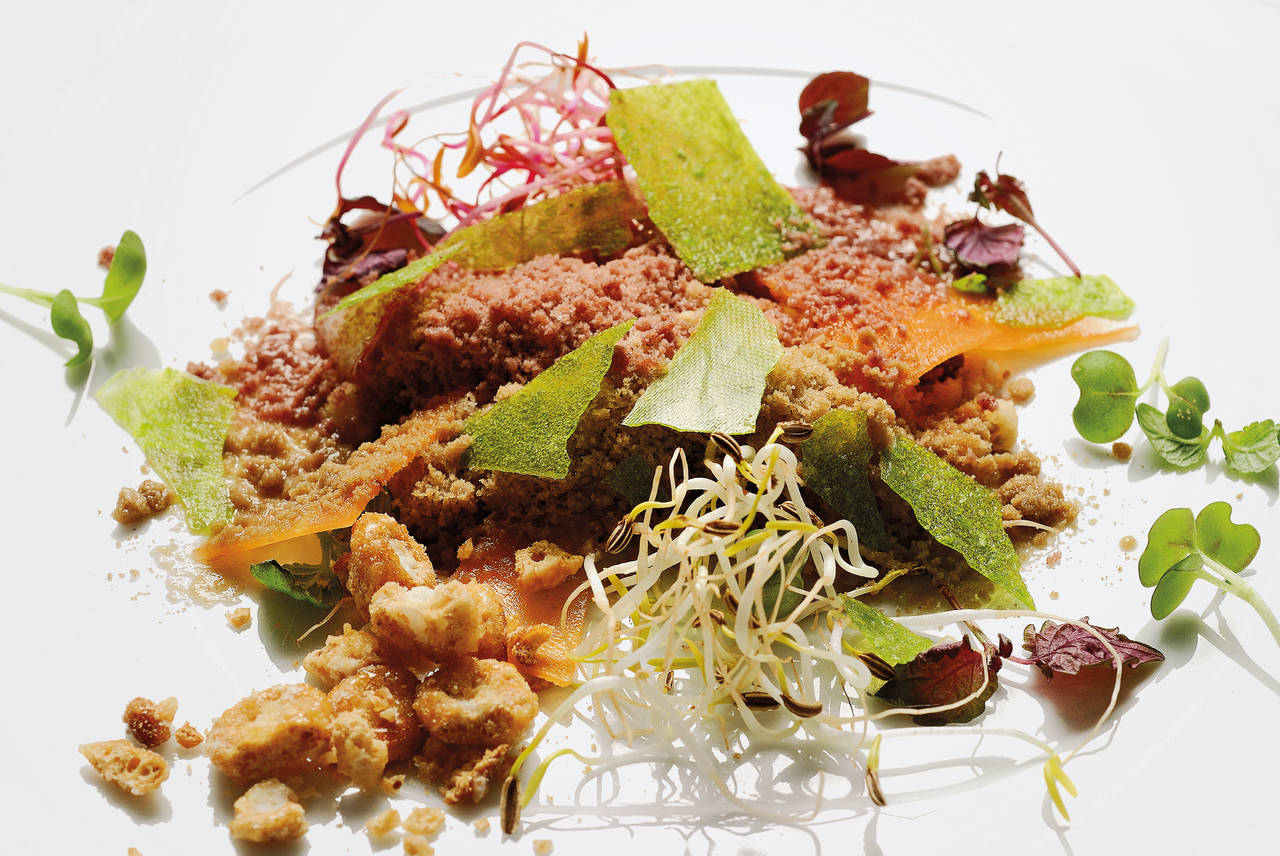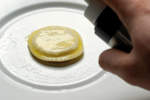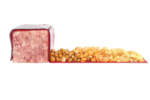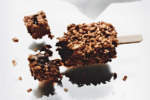the vision of Massimo Bottura
After training in New York in 1995 Massimo Bottura opened the Osteria Francescana that becomes a unique experiment in Emilia. In 2000, the Catalan chef Ferran Adrià calls Bottura in its restaurant where the chef juggles in a kitchen that almost totally manipulates the ingredients. At the Osteria Franciscana Bottura offers a cuisine described as “informal“ created through a deconstruction of traditional dishes, that deprived of the original forms create something new and original, following his own creative flair.
area: What are the characteristics describing the space where a cook works? Should it be dark or bright, what kind of light does he need to work, and with what climate and temperature?
Massimo Bottura: Bright. White. Clean. Tops in every direction – worktops in steel with built-in refrigerators and chests of drawers underneath. Every corner should be dedicated to a specific section of work, a unit with an own sink and workplace, containers and refrigerators. When this is the case, the chef of every section (starters, first courses, second courses, desserts) can manage his space in the best way. It’s not the size of a kitchen that matters, but how the space is organized. Our kitchen is very small, narrow and long. It calls for maximum concentration and organization. It would be ideal to have air conditioning but this is unfortunately hard to install in a kitchen, due to the burners and the aspiration hoods, and it is therefore always a hot, very hot place. The work, the burners, the boiling water, the washing area, the stress of the service... all these elements are essential to make a kitchen work, and they all produce heat. And... fortunately it is like that.
area: Does the organization of the space change according to how the foods are prepared?
M.B.: Order is very important in a kitchen. The fridge by the counter, the cool storage room, the surfaces, the storage areas must all be orderly. We try to act like surgeons who are controlling the hygiene, as carefully as possible. It is not the kitchen of a home. It is design to work as well as possible, and to prove its worth under pressure, in difficult conditions.
area: What is the ideal environment in which to consume your dishes?
M.B.: The ideal environment is a clean and simple table in a harmonious room, that is to say an environment which reflects the thought of the kitchen or the chef. It is very important for us that the environment itself communicates something – music, art, the objects, the chairs, cutlery, glasses, tablecloths, flowers and perfumes are all elements which contribute to the experience as a whole.
area: In your opinion, should the area where the food is prepared be divided from the dining room?
M.B.: In the restaurant it is very important to distinguish the areas – the preparation and the enjoyment of the meal – because the experience at the table is influenced by noise (a professional kitchen is a very noisy place), the smells (a thousand different smells are created when cooking) and the temperature (many people working with burners and boilers and it can therefore get very hot). On the contrary, the meal enjoyed in the dining room can be pure, clean and without disturbing elements. We try to keep it ‘aseptic’ in order not to influence the dishes, and to favour concentration. Things are very different at home because one prepares a full dinner, from the starters to the dessert, with a concept and a logical-progressive sense of the dishes. In my own home the kitchen is open, forming a single environment with the dining room, next to the living room. I prefer to cook in company, perhaps I prepare the most annoying or complicated things in advance, and give the finishing touches in front of my guests. Once, in wealthy homes, the kitchen was a hidden, separate, closed and secret place. This is why many secrets have never left that place. What a pity not to share the joy of cooking with others.
area: Do you agree with the fashion of designing transparent kitchens, with glass walls through which one may observe the food as it is prepared? And what has, in your opinion, inspired this trend?
M.B.: Glass is a good solution if one manages to deal with the problem of mist. A restaurant kitchen is, as I said a moment ago, necessarily a hot place. I have always thought that a glass cube with a kitchen in the middle, surrounded by dining rooms, would be an interesting “place”. Perhaps one must experience the feeling of being the centre of attention, as if on a stage, to know if it can work or not. Regardless of how ‘curious’ we have come, as mirrored by the various ‘reality shows’, I sometimes think that the ‘mystery’, the fact of not knowing how a dish has been made, is a positive thing, it adds a touch of magic to the experience at the table.
Maybe the chefs who prepare our dinner are sweaty, angry and ugly... perhaps you would feel different about the food if you saw how they behave. We’re not all born actors. The best chefs are just chefs, and not performers. I wouldn’t want to deprive the kitchen of its holiness.
area: How much does design and beauty influence the spaces of the kitchen, as compared ot the more functional aspects?
M.B.: Form and Function are completely in symbiosis in the best kitchens. Design is beautiful when it is functional. If it isn’t beautiful, it cannot express itself fully. To me, aesthetics in the kitchen is absolute white. The cleanest, most minimalistic, the purest possible.
area: What are the differences between the domestic kitchen and the industrial one?
M.B.: The differences may be many, or few. In my home I have all the elements of a professional kitchen – everything is in steel, the tops, the refrigerators and the storage cabinets, plus a decorative tiled wall (everything visible from the dining room) which makes the kitchen warm and personal. It took some time for my wife to get used to this kitchen, but even she realizes how functional it is. In this case, the domestic kitchen is very similar to the professional one. Home kitchens are seldom environments organized in a professional way – they are, more than anything else, a place to store things: plates, glasses, cutlery, vases, trays, spices, stocks of food, etc. I see a lot of kitchens which contain a lot, but where it is hard to work. The worktops are the most important thing in a kitchen – a real space for working, not a space for placing things: coffee machine, objects, containers, jars, ladles, etc. Clean surfaces. An area for washing, one for cooking (burners) and one for preparing (cutting). Everything must be within reach. My mother-in-law has so many things in her kitchen that you can never find anything. And she’s not the only one!
area: What relationship is there between the material of your utensils and the foods you prepare?
M.B.: Cutting board for kneading and working pasta, marble for mixing and working desserts and chocolate, stainless steel or Corian for everything else - worktops. Wood for slicing bread. Washable cutting boards: in silicon to cut fruit and vegetables, meat and fish. Ceramic tiles on the walls and floor. Resistant and washable.
area: How much does technology and design influence the way in which you cook?
M.B.: Technology and design are very influential. Cooking is technique. Technique does not mean improvisation. New techniques help the kitchen to evolve, in the concentration of flavours, in the transformation of raw materials in dishes, concepts, pure and defined flavours
area: How much does aesthetics, design and the presentation of a dish matter in the preparation of foods? Apart from in relation to the taste, how much does the chromatic and aesthetic combination of the composition matter?
M.B.: Aesthetics and ethics are one and the same thing. They go hand in hand. Top quality raw materials, skilful preparation, the idea and aesthetics all contribute to make outstanding dishes. The construction of a dish is not an end in itself.
area: What is the importance of the aesthetic value of a dish: the colour, the shape of the plates, the cutlery ... in your opinion, does the current production of objects for the kitchen fully meet the requirements of the cook, or do you think there is a need to invest more in research and design?
M.B.: We are very satisfied with the current productions of the best craftsmen in this context.
area: Is an evolution of plates and cutlery conceivable?
M.B.: The evolution is continuous.


